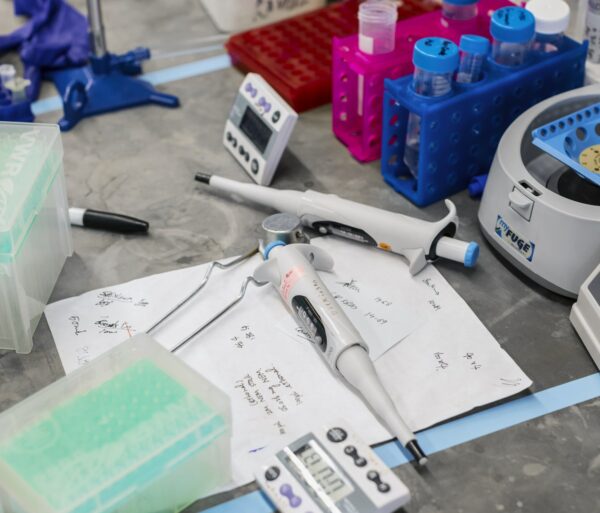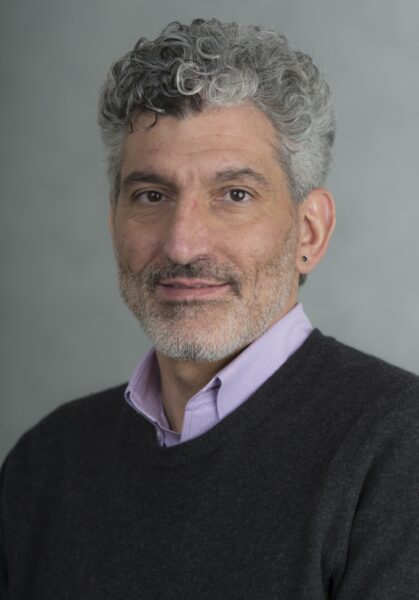A BRF grant helped propel Dr. Yamuna Krishnan’s work to develop a novel device that measures brain health—and more. Now she’s giving back as a member of the Scientific Review Committee.
A new tool created by Dr. Krishnan gives scientists a window into neurodegenerative disorders, immune disorders, and even heart disease and IBD.

In 2016, Yamuna Krishnan, Ph.D., professor of chemistry at The University of Chicago, submitted a grant proposal to the Brain Research Foundation to support a daring idea. She wanted to build devices out of synthetic DNA that could be used to measure nitric oxide, a chemical messenger that plays key role in brain health.
At the time, scientists knew that excessive nitric oxide levels contribute to brain degeneration in diseases like Alzheimer’s disease, Parkinson’s disease, dementia, and stroke, but they had no way of measuring it in living cells. BRF’s Scientific Review Committee (SRC) awarded Dr. Krishnan a BRF Scientific Innovations Award (SIA) to pursue the work. Dr. Krishnan recently followed up with BRF about what’s happened since.
Q: How did the BRF Scientific Innovations Award (SIA) help your research?
A: The SIA award really allowed us to do bold work for which there was no precedent. That led to us publishing an impactful paper in Nature Chemical Biology in March of 2020 showing how our synthetic DNA technology is capable of measuring nitric oxide at subcellular resolution in living cells. The work has also led to several follow up studies.
Q: How will this technology help scientists learn more about nitric oxide?
A: Nitric oxide is a signaling molecule in the brain. Too much of it causes neurodegeneration and too little of cannot initiate brain cell communication and impairs normal brain function. So you can see that the amount of nitric oxide is really critical. Being able to accurately measure nitric oxide allows us to find out if it is dysregulated in many diseases and to identify ways to correct it. I can see this tool being used to study immune disorders, heart disease, and neurobiology, all of which involve nitric oxide levels.
Q: What are the next steps for your research?
A: Now that we have a tool for measuring nitric oxide, we can start thinking about whether we could get drug molecules to correct nitric oxide levels in the brain when they are either too high or too low. Our technology might also help in heart disease because an enzyme called nitric oxide synthase 2 (NOS2) is dysregulated in such diseases. We can use our tool to help find molecules or proteins that are responsible for NOS2 misbehaving and develop molecules to counteract that and treat heart disease. We are also using this technology to build a diagnostic for inflammatory bowel disease (IBD) where an enzyme called nitric oxide synthase 3 (NOS3) is dysregulated in IBD. By measuring nitric oxide levels we are trying to build a test that predicts when a person with IBD will have immune flares to allow more timely treatment.
Q: What are the implications for brain disease?
A: Nitric oxide synthases are essential for signaling in the brain. The brain also has immune cells that interact with neurons and nitric oxide generated by these immune cells is implicated in neurodegeneration. So this work has significant implications for brain health.
Q: After the completion of your SIA project, you were asked to the SRC, which reviews the grant proposals submitted to BRF for funding. What is it like being on the other side of the grant application process?
A: The SRC gets such fantastic proposals. Many times I find myself shaking my head thinking ‘How on earth did our project get chosen for an SIA?!’ BRF is a prestigious funding organization and so naturally, very talented researchers apply. I really wish we had more money to be able support more of these projects. There are so many wonderful proposals we are not able to fund.




